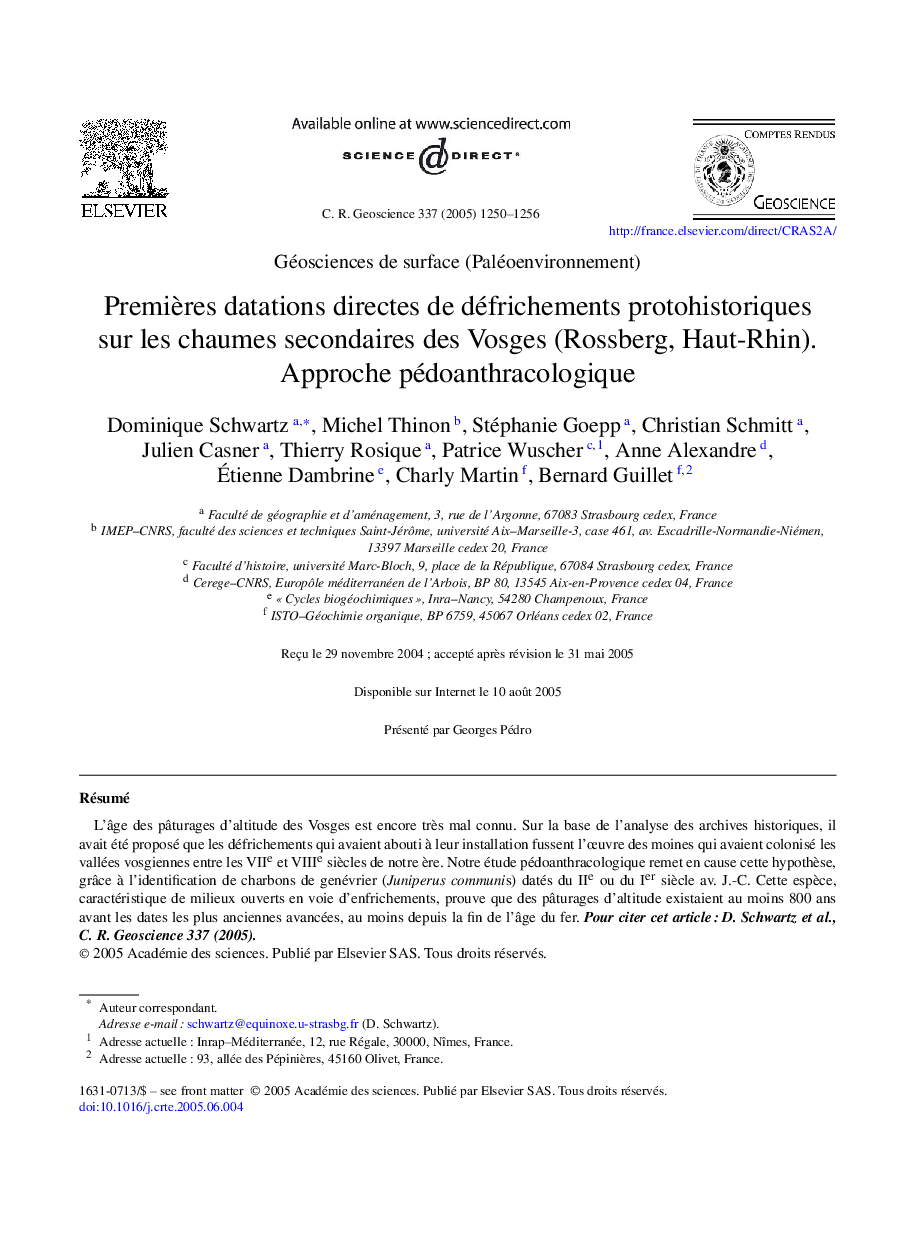| Article ID | Journal | Published Year | Pages | File Type |
|---|---|---|---|---|
| 9461830 | Comptes Rendus Geoscience | 2005 | 7 Pages |
Abstract
The age of the upland grasslands of the Vosges Mountains is still not well known. On the basis of the study of historical archives, it was assumed that the forest clearings, which led to grasslands establishment, were done by the monks who colonized the Vosges valleys between the 7th and the 8th centuries. Our pedo-anthracological study raises questions about this hypothesis, based on the discovery of Juniperus communis charcoal in soils from the 2nd or 1st century BC. This plant specie is characteristic of grasslands developing into fallows. The occurrence of Juniperus communis charcoals indicates that upland grasslands did exist at least 800 years earlier than it was expected before our study, i.e. at least since the late Iron Age. To cite this article: D. Schwartz et al., C. R. Geoscience 337 (2005).
Keywords
Related Topics
Physical Sciences and Engineering
Earth and Planetary Sciences
Earth and Planetary Sciences (General)
Authors
Dominique Schwartz, Michel Thinon, Stéphanie Goepp, Christian Schmitt, Julien Casner, Thierry Rosique, Patrice Wuscher, Anne Alexandre, Ãtienne Dambrine, Charly Martin, Bernard Guillet,
